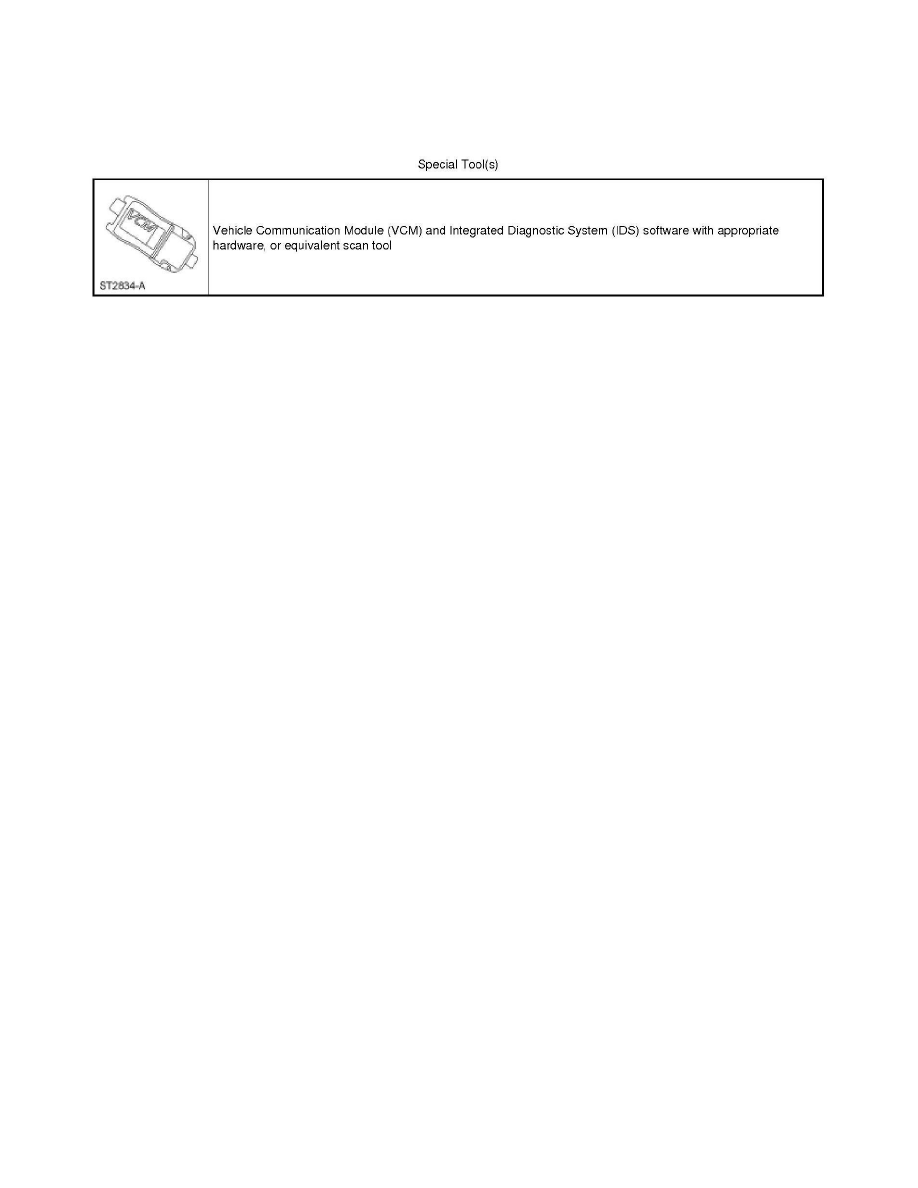Explorer AWD V8-4.6L (2010)

Daytime Running Lamp: Initial Inspection and Diagnostic Overview
Special Tool(s) Used With Diagnostics
Daytime Running Lamps (DRL)
Inspection and Verification
Daytime Running Lamps (DRL)
Inspection and Verification
1. Verify the customer concern.
2. If an obvious cause for an observed or reported concern is found, correct the cause (if possible) before proceeding to the next step.
3. NOTE: Make sure to use the latest scan tool software release.
If the cause is not visually evident, connect the scan tool to the Data Link Connector (DLC).
4. NOTE: The Vehicle Communication Module (VCM) LED prove-out confirms power and ground from the DLC are provided to the VCM.
If the scan tool does not communicate with the VCM:
-
Check the VCM connection to the vehicle.
-
Check the scan tool connection to the VCM.
-
Refer to Information Bus, No Power To The Scan Tool, to diagnose no power to the scan tool.
5. If the scan tool does not communicate with the vehicle:
-
Verify the ignition key is in the ON position.
-
Verify the scan tool operation with a known good vehicle.
-
Refer to Information Bus to diagnose no response from the PCM.
6. Carry out the network test.
-
If the scan tool responds with no communication for one or more modules, refer to Information Bus.
-
If the network test passes, retrieve and record the continuous memory DTCs.
7. If no DTCs related to the concern are retrieved, GO to Symptom Chart. See: Symptom Related Diagnostic Procedures
Principles Of Operation
Daytime Running Lamps (DRL)
Principles of Operation
NOTE: The Smart Junction Box (SJB) is also known as the Generic Electronic Module (GEM).
The Daytime Running Lamps (DRL) feature operates the low beam headlamps at a reduced intensity when the ignition switch is in the RUN position, the
headlamps are not on from any other input, and the transmission is not in PARK (P).
